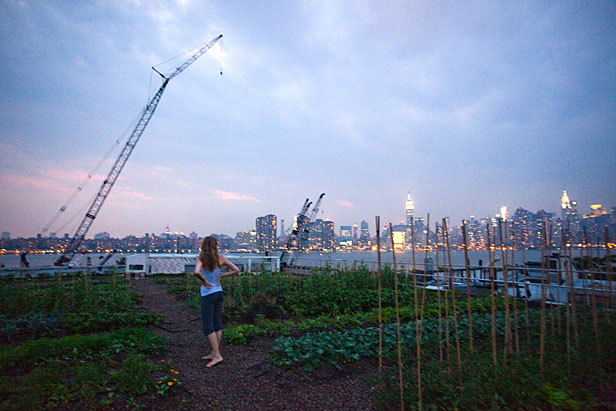Prediction: Most of the predictions in Forbes‘ wide-ranging, maddeningly laid out 2020: What Happens Next series will prove to be wrong. I cannot foretell the future, but I am confident that it will continue flummoxing the futurologists.
Nevertheless, Forbes has gathered an impressive stable of trend watchers for its series, and their educated guesses on what the next decade will bring makes interesting reading. Many of them concern food. This one stands on solid ground, based on present trends, although it’s enormously depressing:
[By 2013] bluefin tuna extinct. Mitsubishi conglomerate sells frozen stockpiles at tenfold previous prices.
Others are enormously hopeful, but seem less grounded in present-day fact. For example, this nugget in Lisa Gansky’s piece on how in the next decade, “Consumers will share everything”:
By 2018 at least one-fifth of urban food worldwide will be grown on rooftops and in former parking lots, which will no longer be needed as open transit became the prevalent form of personal transportation.
I can only assume that by “food,” she means fruits and vegetables, not meat and dairy. But still, it’s a beautiful idea. Gansky presents a vision of cities largely freed from the space- and energy-hogging burdens of the car.
By 2014 dozens of city governments will adopt open transit policies, meaning that public transit agencies and private transportation companies will coordinate schedules and information on traffic patterns and customer behavior that allows them to continually tighten connections between transportation services and improve convenience. More than 120 cities will offer seamless connections among car- and bike-sharing services, taxi ride sharing and public busses and trains.
I want to live in a largely post-car future, and agree with Gansky that it’s fully within our grasp. But squeezing the car out of the city within a decade, creating space to grow a bounty of food, will take more than coordination between government agencies and private business. It will also take significant investment in both mass-transit and food-production infrastructure.
I hesitate to enter the prediction game, but this seems safe to say: While cities will continue making progress in the directions that Granky maps out — they will be forced to by traffic snarls, pricey gas, and limited food access in low-income areas — the political will to make the necessary infrastructure investments will be lacking. At least for the foreseeable future.



